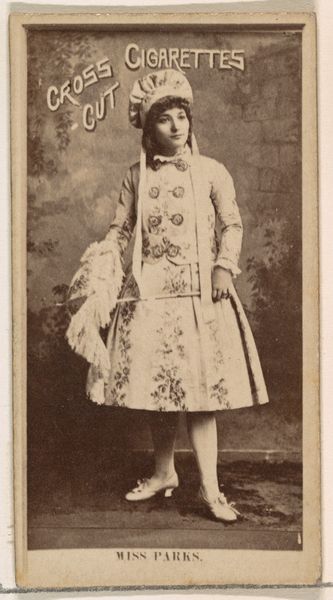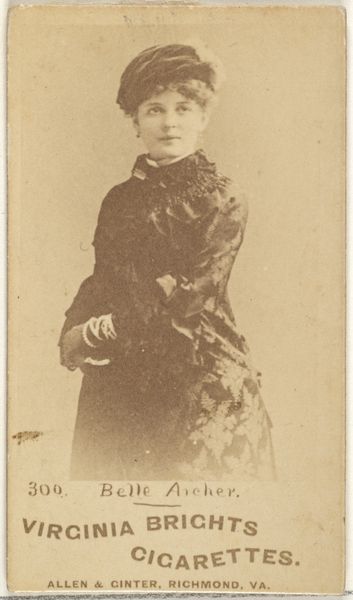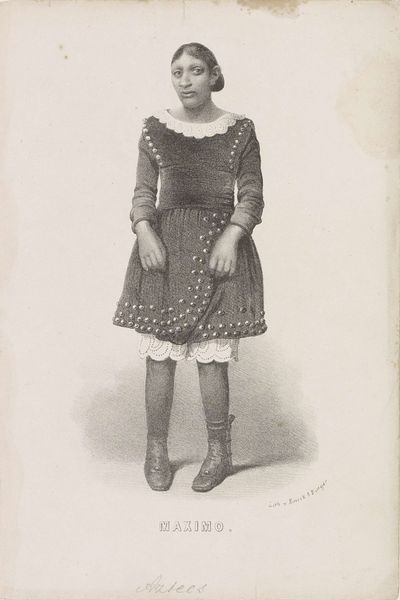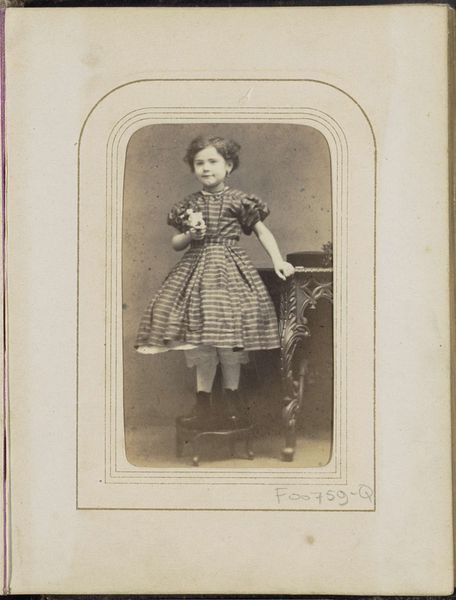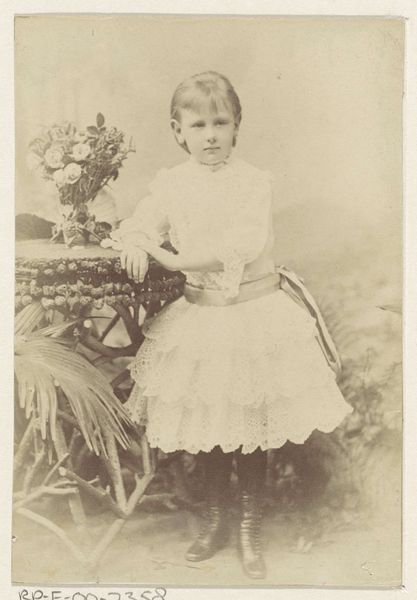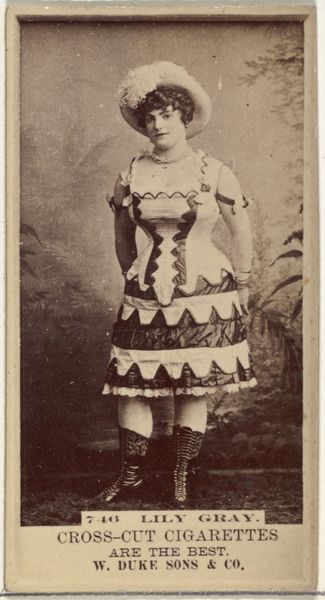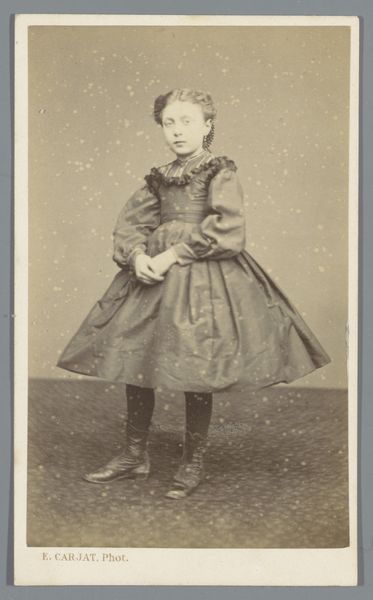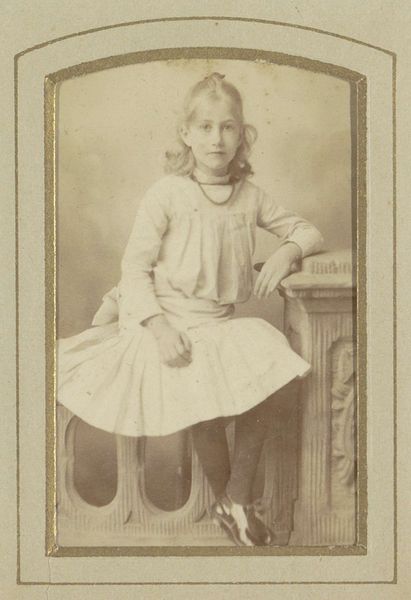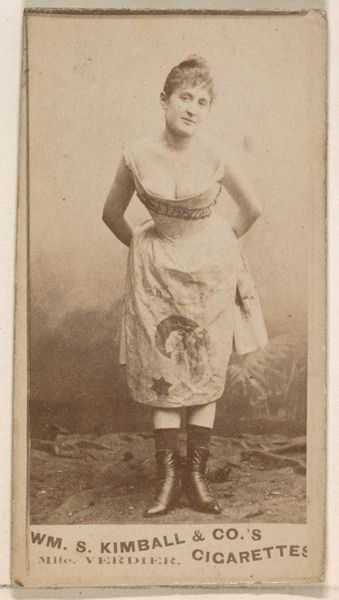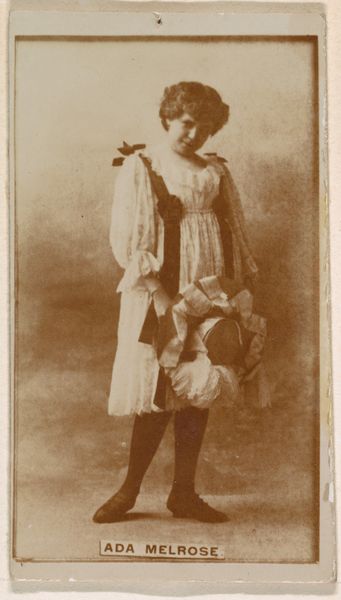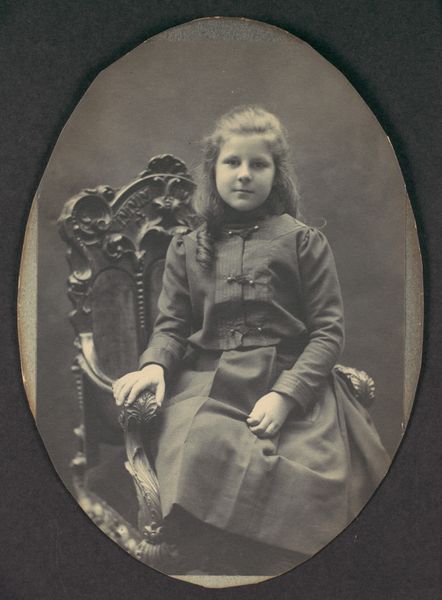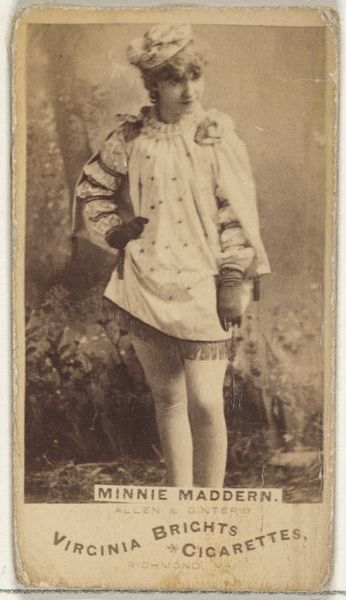
Portret van prinses Wilhelmina als jong meisje, staand Possibly 1891 - 1893
0:00
0:00
photography
#
portrait
#
16_19th-century
#
photography
#
historical photography
#
child
#
19th century
Dimensions: height 163 mm, width 106 mm
Copyright: Rijks Museum: Open Domain
Editor: Here we have "Portret van prinses Wilhelmina als jong meisje, staand," or "Portrait of Princess Wilhelmina as a young girl, standing," created between 1891 and 1893, likely a photograph by Adolphe Zimmermans. I'm struck by its formality, almost a stillness. What's your perspective on this portrait? Curator: It's more than just a portrait; it’s a construction of power and femininity within a specific historical context. Wilhelmina was heir to the throne at a time of rising national sentiment and anxieties around female leadership. How does the composition, the stiff pose, and the dark dress contribute to conveying authority? Editor: I guess it shows how seriously she and her role were taken. But doesn't the girlish dress somewhat undermine the perception of power? Curator: Exactly. It's a negotiation. Consider the gender politics of the late 19th century. Wilhelmina needed to project both innocence and strength. Her youth was both a vulnerability and a symbol of hope for the future. The photographic medium itself also played a role. What does photography, as a relatively new technology, signify about ideas of representation and truth here? Editor: I hadn't considered photography as an active element. It felt like a straightforward recording, but I see your point about its significance in shaping perception. Curator: And what about the implications of the Dutch monarchy's use of a photographic portrait instead of the classical painted portrait? We are in a different time, using new modes to reach a new audience with a new reality in mind. How did her later reign either defy or align with the visual expectations set by images like this? Editor: This makes me want to learn more about the expectations of women in power, and how much photography contributed to their construction. Curator: Indeed. It shows how historical context can open our eyes to different, important angles when approaching art.
Comments
No comments
Be the first to comment and join the conversation on the ultimate creative platform.
